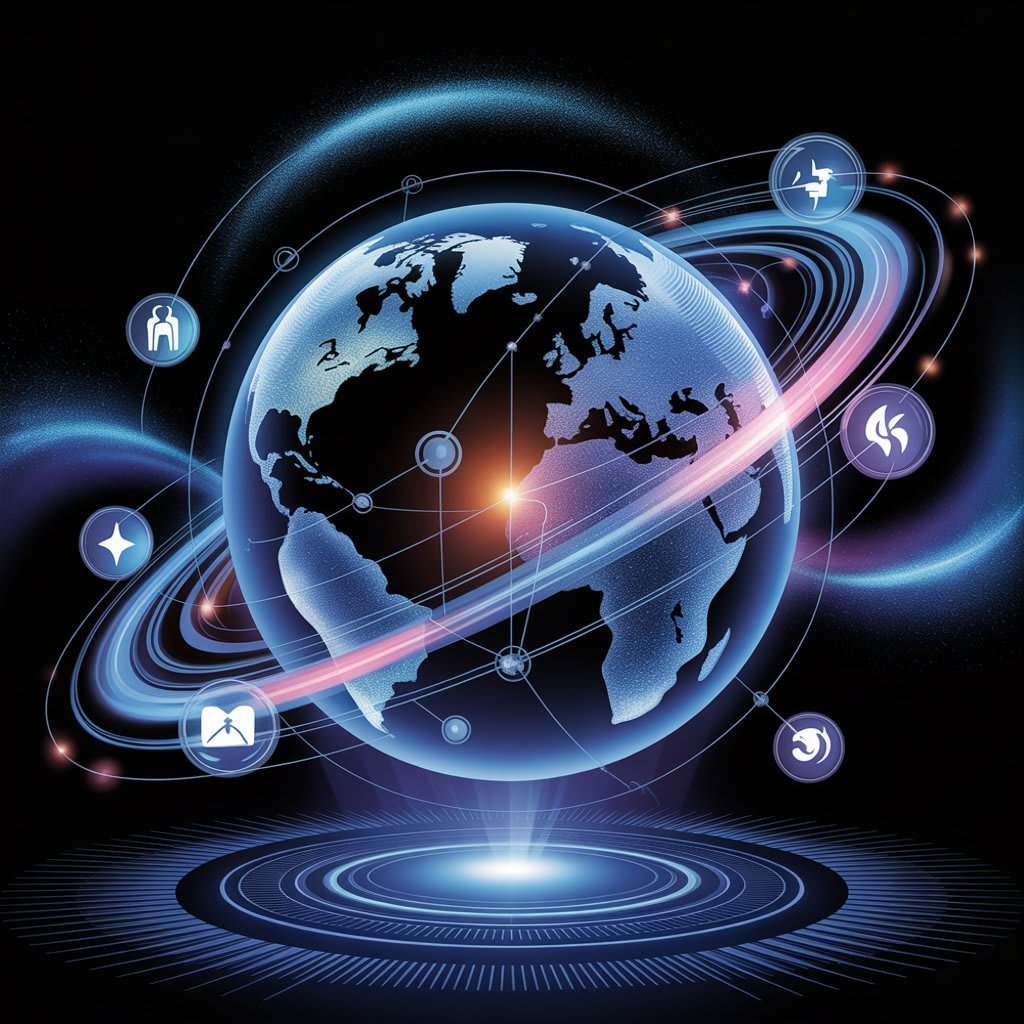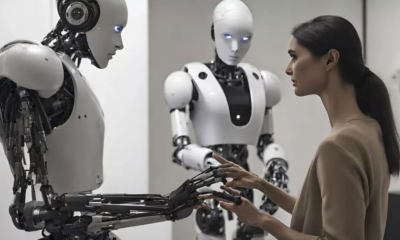Tools & Platforms
AI in the Next Decade: 7 Transformations That Will Change the World

AI in the Next Decade: 7 Transformations That Will Change the World
Artificial Intelligence (AI) is often seen as a technology of the distant future, but the truth is that it is already reshaping our lives. Over the next ten years, AI will likely accelerate even further, influencing everything from how we work and learn to how we fight climate change and protect our health.
Unlike science fiction visions of robots taking over the planet, the reality is both more practical and more powerful. The coming decade will show us that AI is not just about machines—it’s about transforming human life in ways that are profound, sometimes invisible, and often surprising.
Here are seven transformations that AI is expected to bring in the next decade.
1. Healthcare Will Become Predictive and Personalized
Instead of waiting to get sick, healthcare in the next decade will focus on prevention. AI-powered systems will analyze patient genetics, lifestyle, and health records to predict risks before they appear. For example, wearable devices could monitor your heart, sleep, and activity levels in real time, alerting doctors to problems long before symptoms develop.
Hospitals will increasingly use AI to speed up diagnosis, recommend treatments, and even assist in surgeries. The result: longer, healthier lives—but also new challenges in making sure such technology is affordable and accessible worldwide.
2. Education Will Be Reinvented by AI Tutors
In the coming years, classrooms will likely rely on AI-powered teaching assistants. These systems can adapt lessons for individual students, ensuring that no one is left behind. A struggling student might receive extra practice exercises, while an advanced student could be challenged with deeper material.
Beyond schools, adults will use AI-driven learning apps to upskill or switch careers. Education will no longer stop after graduation—it will become a lifelong process supported by AI.
3. Work Will Be Transformed, Not Eliminated
Automation will increase, especially in industries like manufacturing, logistics, and customer service. But rather than destroying jobs, AI will create new roles. Humans will focus more on creativity, problem-solving, and emotional intelligence—areas where machines still struggle.
Companies will also use AI to improve productivity by automating repetitive tasks. The real challenge for society will be retraining workers and ensuring that the benefits of AI-driven productivity are shared fairly.
4. Smarter Cities Will Improve Daily Life
Urban areas are growing fast, and AI will play a key role in making cities more livable. Traffic management systems powered by AI could reduce congestion, while smart energy grids will save electricity and cut costs. Waste collection, water usage, and emergency responses could all be optimized using AI predictions.
At the same time, increased reliance on AI surveillance could raise concerns about privacy and freedom. Striking a balance between safety and personal rights will be one of the defining issues of the decade.
5. AI Will Help Fight Climate Change
The climate crisis is one of humanity’s greatest challenges, and AI could become a powerful tool in addressing it. By analyzing vast amounts of environmental data, AI can predict weather extremes, track deforestation, and help design more efficient renewable energy systems.
Agriculture will also benefit, with AI helping farmers conserve water, reduce waste, and maximize yields. These innovations could play a crucial role in feeding a growing population while protecting the planet.
6. Creativity Will Expand Through Human-AI Collaboration
The next decade will see more artists, writers, and musicians using AI as a creative partner. Far from replacing creativity, AI can provide inspiration, generate new ideas, and handle tedious tasks like editing or mixing.
For example, an author could use AI to brainstorm plots, while a musician might collaborate with AI to create new sounds. This blend of human imagination and machine power will open doors to art forms we cannot yet imagine.
7. Ethics Will Define the Future of AI
The most important transformation may not be technological but ethical. As AI becomes central to society, questions of fairness, accountability, and transparency will grow louder. How do we ensure AI systems are unbiased? Who is responsible when an AI-driven car causes an accident? Should there be global rules governing AI use in the military or surveillance?
The answers to these questions will shape whether AI empowers humanity or deepens inequality. The technology itself is neutral—it is the human choices behind it that matter most.
Final Thoughts
The next decade will not be about whether AI arrives—it’s already here. The real story will be about how deeply it transforms our lives. Healthcare may keep us healthier, education may become more accessible, cities may become smarter, and climate change may be fought more effectively with AI’s help.
Yet with these opportunities come challenges. Jobs will change, privacy will be tested, and ethical dilemmas will grow. The responsibility lies with governments, businesses, and individuals to ensure AI is developed responsibly and used for the benefit of all.
AI in the next ten years will not just change technology—it will change what it means to live, work, and create in the modern world. Whether this change is empowering or destructive depends on the choices we begin making today.
Tools & Platforms
iShares Future AI & Tech ETF (NYSEARCA:ARTY) Surges 27.6% in 2025 — Is It a Buy?

ARTY delivers strong tech exposure with 83% allocation to AI leaders, but volatility and valuations test investor conviction | That’s TradingNEWS
8/30/2025 8:54:36 PM
Tools & Platforms
Emperor Musk’s AI Clothes – Will Lockett’s Newsletter

Musk has been parading around in his AI clothes for a while now. With the amount he screams and shouts about AI, you’d think he invented it. Of course, like everything else Musk peddles, he had nothing to do with its invention or development, except for underpaying and overworking his engineers and being an awful, overpromising PR man. However, people aren’t just noticing that Musk’s clothes are non-existent — they are also starting to point and laugh at his skid marks and the “I Love the Nazi Man” tattoo down his back. Why? Because he just can’t seem to get his AI up and working. And there is no little blue pill to remedy this situation.
Take, for example, Tesla’s hilariously crap Robotaxi rollout. The media at large is only just cottoning on to it being a huge PR stunt.
I have gone on ad nauseam about why Tesla’s self-driving cars are completely inadequate, so if you want to know the details, read my previous article here. But the helicopter view is that, unlike other autonomous vehicles, Tesla’s system has zero redundancy or safety nets and requires a nearly 100% accurate AI — which categorically can’t exist — to be even remotely safe.
Tesla is painfully aware of this fatal flaw, with Tesla engineers whistleblowing their concerns about it to the media (read more here) and the DOJ opening an investigation (read more here). So I, along with countless other commentators, was pretty damn relieved to find out that Tesla’s Robotaxis had safety drivers. There was even mention of remote workers being able to take control of the car and drive it safely in the case of a critical disengagement.
But this kind of system isn’t impressive enough for Musk. Any Uber or Lyft driver with a Tesla who wastes their money on FSD can do the exact same thing. There is no social or investor kudos to be gained for Tesla or Musk here. And here is a hint: Musk doesn’t make money from Tesla sales. After all, his $50 billion pay packet (which is now less, thanks to Musk tanking Tesla’s valuation) was the equivalent of him getting $10,000 for every Tesla ever sold! Tesla makes substantially less profit from every car sold than that.
So, what do you do if you have bet your entire company’s valuation on autonomous technology that you simply can’t deliver on?
Fudge it.
Tesla put the safety driver in the passenger seat! Because, look, it’s a self-driving car — there is no one in the driver’s seat!
This is a dangerous move that offers no benefit other than optics.
Rather than being able to properly take over the car and drive it to safety, the only thing these safety drivers could do was press a button to bring the vehicle to a stop. Which, as anyone with a driving licence will tell you, is not always the safest option! Particularly when you consider that Robotaxis have been spotted driving into lanes of oncoming traffic.
Yet, this bafflingly shite decision wasn’t really reported on. Or at least it wasn’t until a video surfaced a few days ago that showed FSD failing and a safety driver being forced to exit the vehicle in the middle of traffic to take the driver’s seat and regain control. (watch it here).
This shows just how wildly dangerous Tesla’s Robotaxis are.
The safety driver had to take a serious risk to take control of the car. Not only that, but this incident suggests there are no remote operatives capable of taking over when things go wrong. That has been a core safety feature of all developing self-driving ride-hailing services, such as Waymo and Cruise, since day one and is routinely used to keep passengers safe. The fact that this is absent for Robotaxis, which Tesla already know have a far, far higher critical disengagement rate than any other self-driving ride-hailing service, could easily be seen as insanely negligent.
Musk is comfortable putting other people — not just the safety driver, but paying passengers and the public — in danger, all for a crappy PR stunt to cover up how bad his self-driving system actually is. And the media at large, as well as public consensus, are beginning to catch up to this horrifying fact.
However, Musk’s AI woes go far, far deeper than that.
Tools & Platforms
‘AI shame’ is a real phenomenon in the workplace, claims report; what may be ‘scaring’ top execs in America

A new survey from WalkMe, an SAP company, reveals a striking paradox in the modern workplace: The employees who use AI the most—top executives and Gen Z workers—are also the least likely to receive official guidance, training, or company approval for their use. The findings from the 2025 AI in the Workplace survey suggest that a phenomenon dubbed “AI shame” is taking hold. The annual survey polled 1,000 working U.S. adults who use AI in their jobs to understand the reality of AI adoption. Nearly half of all workers surveyed (48.8%) admitted to hiding their use of AI on the job to avoid judgment. This discomfort is particularly pronounced at the top, with 53.4% of C-suite leaders confessing they conceal their AI habits, despite being the most frequent users.x`Almost half (45%) of workers admit to pretending to know how to use an AI tool in a meeting to avoid scrutiny, while 49% have hidden their use of AI to avoid judgment. This trend is even more pronounced among Gen Z, with 55.5% pretending to understand AI tools and 62% hiding their use.
What makes Gen Z anxious about AI
Gen Z workers show both enthusiasm and anxiety regarding AI. A notable 62.6% of Gen Zers have used AI to complete work but then pretended it was their own, the highest rate among any generation. Over half (55.4%) have feigned understanding of AI in meetings.Despite this widespread use—89.2% of Gen Z employees use AI at work — they report receiving the least amount of support. Only 6.8% have received extensive, time-consuming AI training, and 13.5% received none at all. This lack of formal guidance has led 89.2% of them to use tools not provided or sanctioned by their employers.“Companies are not educating enough about this whole thing,” said Sharon Bernstein, WalkMe’s Chief Human Resources Officer, in an interview with Fortune. She noted that companies are failing to facilitate the use of AI tools or guide their employees effectively.
AI ‘Class Divide’ and Productivity Dilemma
The survey also points to an “AI class divide,” where access to training and guidance increases with rank. Only 3.7% of entry-level employees receive substantial training, compared to 17.1% of C-level executives. This leaves the most frequent users, junior and younger staff, to navigate the new technology on their own, risking a growing knowledge gap.While 80% of employees believe AI has boosted their productivity, a significant number are struggling. Almost 60% confessed to spending more time trying to manage AI tools than it would have taken to do the work themselves.Gen Z is particularly affected by this paradox:* 65.3% say AI slows them down, the highest among all age groups.* 68% feel pressure to produce more work because of it.* Nearly one in three are deeply anxious about AI’s impact on their jobs.This disconnect between corporate hype and on-the-ground reality fits into a broader picture of chaotic AI implementation. For instance, a recent MIT study found a staggering 95% failure rate for generative AI pilot programs at large enterprises, suggesting a significant gap between the theory of AI and its practical application.
-
Tools & Platforms3 weeks ago
Building Trust in Military AI Starts with Opening the Black Box – War on the Rocks
-

 Ethics & Policy1 month ago
Ethics & Policy1 month agoSDAIA Supports Saudi Arabia’s Leadership in Shaping Global AI Ethics, Policy, and Research – وكالة الأنباء السعودية
-

 Events & Conferences3 months ago
Events & Conferences3 months agoJourney to 1000 models: Scaling Instagram’s recommendation system
-

 Jobs & Careers2 months ago
Jobs & Careers2 months agoMumbai-based Perplexity Alternative Has 60k+ Users Without Funding
-

 Funding & Business2 months ago
Funding & Business2 months agoKayak and Expedia race to build AI travel agents that turn social posts into itineraries
-

 Education2 months ago
Education2 months agoVEX Robotics launches AI-powered classroom robotics system
-

 Business1 day ago
Business1 day agoThe Guardian view on Trump and the Fed: independence is no substitute for accountability | Editorial
-

 Podcasts & Talks2 months ago
Podcasts & Talks2 months agoHappy 4th of July! 🎆 Made with Veo 3 in Gemini
-

 Podcasts & Talks2 months ago
Podcasts & Talks2 months agoOpenAI 🤝 @teamganassi
-

 Mergers & Acquisitions2 months ago
Mergers & Acquisitions2 months agoDonald Trump suggests US government review subsidies to Elon Musk’s companies





















